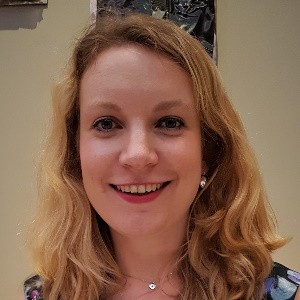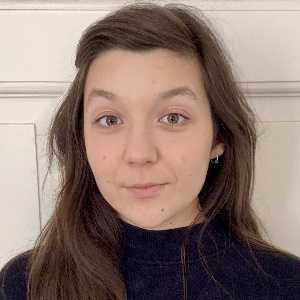Project C05
(In)variability in locality constraints. Evidence from resumption
PI(s): Prof. Dr. Doreen Georgi & Prof. Dr. Martin Salzmann
Project C05 investigates variability of resumptive dependencies regarding their sensitivity to island constraints within and across languages. The goal is to determine whether these constraints are due to grammatical principles or can be reduced to processing difficulty. By means of a translation-matched comparison of 4 languages in parallel with large-scale acceptability-rating experiments where non-syntactic factors are held constant, it becomes possible to detect cross-linguistic as well within-language variability. This would constitute a case of Hidden Variability and provide evidence that the explanation of island constraints requires reference to grammatical principles.
in Phase 2
Hidden variability in "sharing" constructions
PI(s): Prof. Dr. Doreen Georgi
This project investigates the limits of variability in the formation of filler-gap dependencies by studying sharing constructions (SCs), in which a single filler relates to several gaps (as in across-the-board and parasitic gap constructions). We will apply a battery of novel as well as refined diagnostics using quantitative experimental methods and direct elicitations to evaluate the hypothesis that SCs arise from variable underlying sources despite their surface similarities (= hidden variability). To this end, we will compare the morphosyntax of (i) different SCs within a language, and (ii) the same SC across different languages. The results will allow us to improve existing formal models of how the syntax generates sharing, and to better understand how the mechanisms involved in filler-gap-dependency formation are constrained.
in Phase 1
The limits of variability in extraction asymmetries
PI(s): Prof. Dr. Doreen Georgi
The project investigates the source of extraction asymmetries in syntax from a cross-linguistic perspective, in particular subject/non-subject asymmetries. It is well known that the deplacement of subjects in many languages is more restrictive than that of non-subjects; this manifests itself in the former requiring special morphological or syntactic building blocks (e.g., valency changes, addition or deletion of morphemes on the verb) in order to be extracted. In particular, we focus our investigations on one of these asymmetries that has been comparatively understudied, the so-called anti-aggreement effect (AAE). According to the common definition in the literature, in languages with the AAE, the morphology that doubles an argument (e.g., congruency, clitic) is either reduced or eliminated altogether under subject extraction — such as in constituent questions or under focus, where a phrase is moved to the left edge of the sentence. The goal of the project is to determine the factors that trigger AAE and subject/non-subject extraction asymmetries in general. The central question is whether there is one constraint in the grammar that triggers all extraction asymmetries (and the visible asymmetries are just different surface repairs of the same constraint), or whether there are multiple sources of these effects. We also want to fathom why many, but not all, languages with argument doubling morphology exhibit the AAE. To answer these questions, we are conducting a comparative linguistic study of about 15 languages with the AAE from different (sub)families. In doing so, we also study in detail how the argument encoding system and the deplacement system of each language works – something that has been done little to nothing in the literature on the AAE. We collect data with the help of native speakers in questionnaire studies (grammaticality judgments) and in elicitations. In doing so, we compare across languages the conditions under which AAE is triggered or blocked. This allows us to determine whether these factors vary widely or whether there is a limited number of factors that condition the effect.
The result of the project is the following: AAE does not have a source that is the same in all languages, i.e., it does not arise from a general restriction about subject extraction in grammar. Rather, we find that the relatively stable (widespread across languages) AAE phenomenon is multi-causal, that is, it has different triggers in different languages. The effect is the result of the interaction of general grammatical operations involved in deplacement and argument doubling (movement, congruence, …) and independent – and partly language-specific – constraints over these operations in individual languages. The key empirical observation motivating this conclusion, among others, is that in languages with the AAE, the effect of reduction/dilution of argument doubling morphology also occurs outside of subject extraction. This means that in each case there is a broader, more generalization about the occurrence of this morphology in a language, and that the AAE under deplacement is only one of several contexts where this generalization comes into play. In our work, we fathom these generalizations through the detailed study of the grammatical properties of languages. The relevant factors we have identified are: (a) the morphosyntactic system of argument doubling (How is argument doubling constrained in a language?), (b) the nature of morphological doubling (congruence expressed by bound morphemes, free or clitic pronouns), and (c) properties of deplacement in a language (Is dependency generated by movement or base generation? Does it leave gaps or resumptive pronouns?). We have found that in some languages the AAE is the result of contextual allomorphy, i.e., a congruency morpheme is sometimes simply phonologically null for independent reasons (e.g. in Limbum (Grassfields Bantu, Niger-Congo) and Welsh (Celtic, Indo-European)); in other languages, AAE results from the fact that the morpheme expressing argument doubling is a pronoun and the proper, thematic argument of the verb, while the doubled NP serves only as a left-peripheral adjunct-a function that not all noun types can take (e.g., in Awing (Grassfields Bantu, Niger-Congo). In a third group of languages, the doubling morphology is pronominal, but not the thematic argument of the verb (pronominal clitic, resumptive pronoun): pronominal expressions are not compatible with any type of NP as antecedent (only with referential/specific antecedents, but not, e.g. e.g., with wh-expressions); for those noun types that cannot be antecedents, the pronominal element cannot occur, leading to AAE (e.g., in Asante Twi (Kwa, Niger-Congo) or in Fiorentino (Romance, Indo-European). Our finding suggests that it is not necessary – and even superfluous – to postulate construction-specific rules that refer either to deplacement directly or indirectly to features associated with it in order to formally capture AAE, as is done in the existing literature. Instead, AAE follows from a more generalization about when and how argument doubling is possible in a language-with AAE-like implications even in contexts outside of deplacement.
Members



